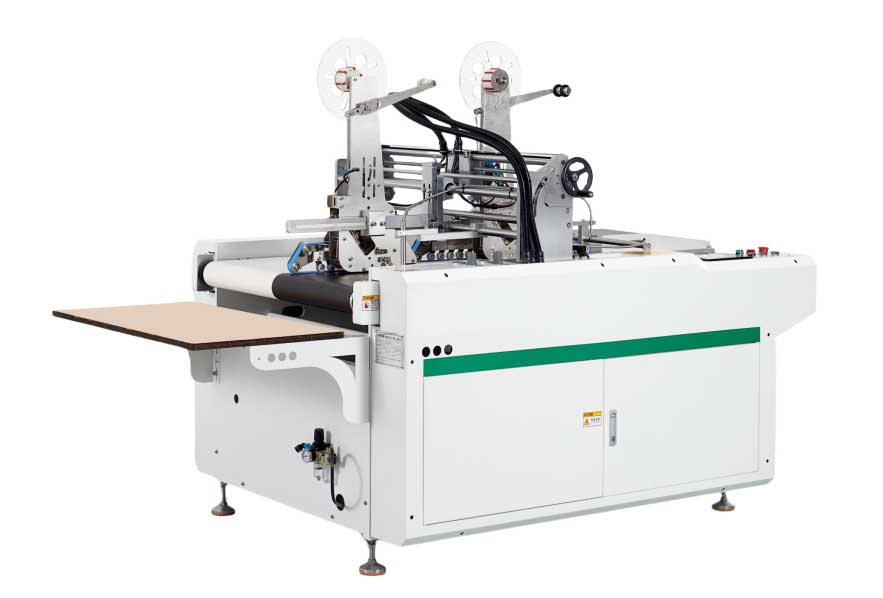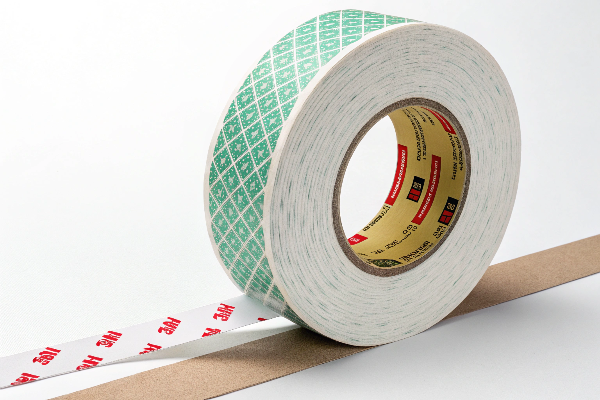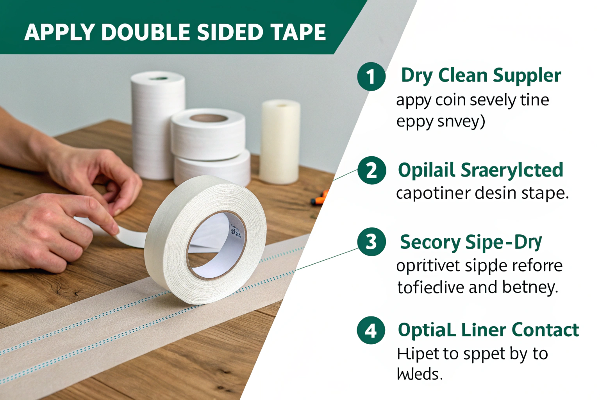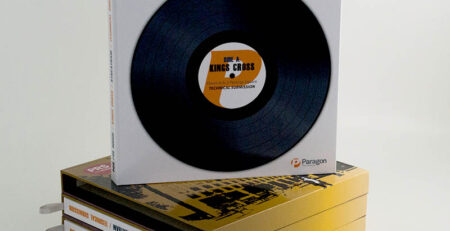How can you apply double-sided tape automatically to boxes?
Struggling with slow, messy manual taping on your box production line? It wastes time and materials, hurting your efficiency. Manual application is often inconsistent and costly.
The best way to apply double-sided tape automatically to boxes is by using a specialized tape application machine. These machines ensure precise placement, consistent pressure, and high speed, integrating seamlessly into production lines for efficiency and quality.
Applying double-sided tape seems simple, but doing it consistently and quickly by hand on hundreds or thousands of boxes is a real challenge. Many of our customers in the packaging and printing industries face this exact issue. They need speed, precision, and reliability, but manual methods often fall short, leading to bottlenecks and inconsistent quality. Let’s explore some common questions about using double-sided tape and see how automation provides the answers businesses need. We’ll look at the common frustrations and how technology solves them effectively.
Is there really a trick to using double-sided tape effectively?
Finding double-sided tape tricky to handle? Aligning it perfectly and applying it smoothly without bubbles or wrinkles by hand is frustrating. It slows down your workflow significantly.
Yes, the "trick" involves preparing the surface well (clean, dry) and applying firm, even pressure. But the real secret for consistent, fast application in production is using an automated tape applicator machine.
!
Manually applying double-sided tape can feel like you need magic tricks sometimes. We often hear about these struggles from clients before they switch to automation. Here’s a breakdown of the manual "tricks" versus the automated solution:
Manual Application Challenges
- Surface Preparation: The surface must be perfectly clean and dry. Dust, oil, or moisture prevents good adhesion. This requires an extra cleaning step for every single box, adding time.
- Alignment: Getting the tape straight and exactly where it needs to be is difficult by hand, especially over long lengths or on complex shapes. Misalignment often means removing the tape and starting over, wasting tape and time.
- Pressure: Applying consistent, firm pressure along the entire length of the tape is crucial for a good bond. Manual pressure is naturally uneven, leading to weak spots or bubbles.
- Handling: The tape can easily stick to fingers, itself, or the wrong surface during application.
The Automation Advantage
An automatic tape applicator handles all these "tricks" effortlessly.
| Feature | Manual Method | Automated Method | Benefit |
|---|---|---|---|
| Surface Prep | Requires manual wipe | Often integrates cleaning (optional) | Consistency, less reliance on operator |
| Alignment | Eyeballing, guides | Precise mechanical guides/sensors | Perfect placement every time |
| Pressure | Uneven hand pressure | Calibrated rollers/applicators | Strong, uniform bond |
| Handling | Fiddly, error-prone | Controlled feed and cut mechanisms | Speed, reduced waste, no sticking |
Essentially, the machine turns these tricky manual steps into a smooth, repeatable process. It ensures the tape is applied correctly the first time, every time, removing the variability and frustration of manual work. This is vital for businesses needing high throughput and quality.
How do you make double-sided tape stay put permanently?
Worried about double-sided tape peeling off your boxes later? When tape fails, it can lead to product damage, returns, and unhappy customers. It undermines your packaging quality.
To ensure double-sided tape stays, use the right tape for your box material, ensure the surface is clean, and apply significant, even pressure. Automated machines excel at applying consistent pressure for lasting bonds.

Ensuring a permanent bond is critical in packaging. A box that pops open because the tape failed reflects poorly on the brand. I’ve seen businesses struggle with this, especially when dealing with different box materials or environmental conditions. Achieving a lasting bond involves several factors:
Key Factors for Tape Adhesion Longevity
- Surface Compatibility: Not all tapes stick well to all surfaces. Cardboard, coated papers, plastics, and recycled materials have different surface energies. You need a tape adhesive formulated for your specific box material.
- Manual: Requires careful tape selection and testing.
- Automated: Once the right tape is chosen, the machine applies it consistently, ensuring optimal contact regardless of minor surface variations the operator might miss.
- Surface Cleanliness: As mentioned before, dust, grease, or even fingerprint oils can severely weaken the bond over time.
- Manual: Relies on diligent manual cleaning.
- Automated: Reduces handling and potential contamination; can integrate cleaning stations.
- Application Pressure: This is crucial for maximizing the contact area between the adhesive and the surface. Insufficient pressure results in a weak initial bond that’s more likely to fail later.
- Manual: Pressure is inherently variable and often insufficient.
- Automated: Machines use calibrated rollers that apply consistent, optimal pressure across the entire tape width, ensuring maximum bond strength from the start.
- Temperature and Environment: Some adhesives are sensitive to temperature during application or storage.
- Manual/Automated: Both require considering the environment, but automation ensures the application itself is consistent within that environment.
An automatic tape applicator tackles the most critical variable under operator control: pressure. By applying the tape with precisely controlled force, it ensures the adhesive achieves its maximum potential bond strength, making it far more likely to stay put permanently compared to manual application. This reliability is essential for our B2B clients who need their packaging to perform flawlessly.How do you make double-sided tape stick immediately?
Frustrated when double-sided tape just won’t grab hold initially? You press it down, but it lifts right off, wasting time and causing immense irritation during assembly.
Making double-sided tape stick instantly requires applying firm, immediate, and uniform pressure across the tape’s surface. Automated applicators are designed to do exactly this, ensuring a secure initial tack every time.

That initial stick, often called "tack," is vital for a smooth application process. If the tape doesn’t grab hold right away, the whole process stumbles. I remember visiting a workshop where operators were constantly fighting with tape rolls, pressing down multiple times just to get the application started. This is where automation makes a huge difference.Understanding Initial Tack
- What it is: Tack is the adhesive’s ability to form an immediate bond with a surface under light pressure. It’s about that instant grab.
- Why it matters: Good initial tack holds the tape in place while the stronger, permanent bond develops (which often requires more pressure and time). Without it, alignment is impossible, and the tape might shift before it’s properly secured.
Why Manual Application Struggles with Tack
- Inconsistent Pressure: Fingers or hand tools rarely apply perfectly even pressure. Some parts of the tape might get good contact, while others barely touch the surface.
- Hesitation/Readjustment: If an operator is unsure about alignment, they might apply the tape lightly at first. This light touch is often insufficient for good initial tack, especially with less aggressive adhesives.
- Speed vs. Pressure: Trying to apply tape quickly by hand often means sacrificing firm pressure.
How Automation Ensures Instant Sticking
Automatic tape applicators are specifically engineered to overcome these issues:
- Manual/Automated: Both require considering the environment, but automation ensures the application itself is consistent within that environment.
- Immediate, Consistent Pressure: As the machine feeds the tape, rollers or pressure pads apply immediate and perfectly uniform force across the entire width. This ensures the adhesive makes optimal contact with the surface right away, maximizing initial tack.
- Controlled Application: The machine applies the tape in one smooth, controlled motion at the correct speed and pressure. There’s no hesitation or unevenness.
- No Operator Variability: Every application receives the same precise pressure, ensuring consistent initial stickiness from the first box to the last.
By guaranteeing a strong initial grab, automation speeds up the process dramatically and eliminates a major source of frustration and errors associated with manual taping. This leads directly to higher throughput and better quality control.How do you get the backing off double-sided tape easily?
Struggling to peel the liner off double-sided tape? Fumbling with the edge wastes precious seconds on every piece, especially on a busy production line. It’s annoying and inefficient.
While manual tricks exist (scoring, using a blade), the easiest and fastest way in production is using an automatic tape applicator. These machines remove the liner automatically during application.

Removing the protective liner or backing from double-sided tape is famously fiddly. I’ve seen people resort to all sorts of tricks – using craft knife tips, trying to separate the edge with a fingernail, even pre-folding a corner (which adds another step). On a production line, these seconds add up quickly, creating significant bottlenecks.Manual Liner Removal Challenges
- Time Consuming: Finding the edge and peeling the liner takes time, especially with gloves on or with tapes that have very thin liners.
- Frustrating: It can be genuinely difficult, leading to operator frustration and reduced morale.
- Potential for Damage: Using tools like knives can accidentally cut or damage the tape or the product underneath.
- Waste Management: Discarded liners can create mess around the workstation.
The Automated Solution: Integrated Liner Removal
This is one of the most compelling advantages of automatic tape applicators, especially for operations focused on efficiency:
- Simultaneous Action: As the machine applies the tape to the box surface, it simultaneously peels away the liner using integrated mechanisms. This happens instantly as part of the application cycle.
- Mechanism: Different machines use various methods, such as:
- Sharp angled plates or blades that separate the liner at the point of application.
- Vacuum systems that grip and pull the liner away.
- Take-up rollers that wind the removed liner neatly.
- No Manual Intervention: The operator doesn’t need to touch the liner at all. The machine handles the entire process from applying the tape to removing the backing.
- Speed and Efficiency: This eliminates the entire manual step of liner removal, drastically increasing the speed of the taping process. What took several seconds manually now happens instantaneously within the machine’s cycle.
- Cleanliness: Many machines collect the removed liner onto a take-up spool, keeping the work area tidy.
For any business applying significant amounts of double-sided tape, automating the liner removal process is a game-changer. It directly addresses a major time sink and source of inefficiency in manual operations, contributing significantly to overall productivity gains. Our Kylin Machinery tape applicators are designed with precisely this efficiency in mind.Conclusion
Manual taping is slow, inconsistent, and frustrating. Automation solves these issues by applying tape precisely, consistently, and quickly, even removing the liner instantly. It boosts efficiency and quality.









发表回复